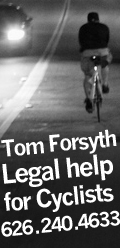BICYCLE lovers, thrifty as well as trend conscious, are pulling neglected 10-speeds from storage and readying them for the road again. (Let the environmentally aware bragging rights begin.)
Natasha Calzatti for The New York Times
These bicycles, made in the 1970s and 80s, used 27-inch wheels, which have been replaced with the smaller 700c wheels by road bike manufacturers. But a recent surge in sales of 27-inch tires suggests that the lowly steeds of yore are gaining new life as commuter bikes and weekend cruisers.
This time around, bike owners have more high-tech tires to choose from. The latest models feature increased thread counts in tire casings, and Kevlar and other space-age fibers to improve puncture resistance, as well as sophisticated rubber compounds that are durable, improve traction and enhance ride quality.
âThe manufacturers canât make the tires fast enough,â said David Pierce, a senior buyer at Quality Bicycle Products, one of the countryâs biggest parts distributors, who reported a 200-percent increase in sales of the tires this year.
Ramona Marks and Ted Liscinski, carless volunteers at a nonprofit bike repair shop in Los Angeles, the Bicycle Kitchen, tested five pairs of tires while commuting and running errands around the Southland.
The tires tested, in the order they appear (left to right) in the photo in the photo above:
VITTORIA RUBINO TECH II $29.99 www.bikesomewhere.com. Mr. Liscinskiâs favorite, this tire found the sweet spot amid form, function and economy. The all-black tireâs aesthetic was âniceâ and âclean.â After riding over a âbunch of potholes, it held up just fine.â And âthe tiniest amount of treadâ ensures âthat if you are running over a piece of wet ground, you donât have to worry about slipping.â
CONTINENTAL ULTRA GATORSKIN $34.99, www.downtownbicycles.com. Mr. Liscinski put the Gatroskinâs reputation of flat protection to the test by running over glass, and days later reported âno problems â I havenât lost any air.â With ânot much of a treadâ they were ideal for riders who âwant to go a little fasterâ or for commuters who hate changing flats. His one complaint? âTheyâre expensiveâ but âtheyâll last quite a while if you donât skid.â
PANARACER PASELA $17.99, www.nashbar.com. Ms. Marks prefers a slick tire, but she âlovedâ the Panaracer. It was âeasy to get on,â and the Paselaâs minimal tread provided a âsubtleâ but âsofter ride.â âGoing over cracks in the pavement, Iâm not fearful anymore.â She also unintentionally rode over âa lot of glassâ and âthey were fine.â And she liked their appearance, which she described as âpretty and classic.â
SPECIALIZED ALL CONDITION ARMADILLO $50, www.specialized.com. Long synonymous with puncture-resistant tires, the Armadillo was âreally hard to get on,â and Ms. Marks almost pinched the inner tube multiple times during installation. What drove her to persevere was the thought that once she got them on, she would have months of flat-free miles. On the road, she said, they were smooth and fast, and âgood for cornering.â They âreminded me why I donât want tread: because youâre not competingâ with the bike.
MICHELIN WORLD TOUR $15.95, www.bikemannetwork.com. Unlike some inexpensive tires that are difficult to install, the World Tour âslid right on.â With a deep tread, the tire is âwider than normalâ and âa little slowerâ but appropriate for cyclists who live in places that receive regular rainfall, Mr. Liscinski said. The tan sidewall adds to the unitâs retro appearance and would complement âa bike with a basket.â
 imachynna
imachynna08.7.08 - 6:47 pm
reply
 -->
-->



 reviewing 27" tires!
reviewing 27" tires!
